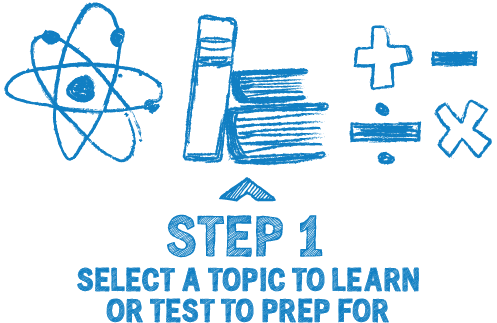Third Law of Thermodynamics
Grade 10 Science Worksheets
The third Law of Thermodynamics states that it is impossible to cool any substance to absolute zero in a finite number of steps.
Table of Contents:
- Third Law of Thermodynamics
- Equation of the Third Law of Thermodynamics
- Applications
- FAQs
Third Law of Thermodynamics - Grade 10 Science Worksheet PDF
This is a free printable / downloadable PDF worksheet with practice problems and answers. You can also work on it online.
|
Untimed | |
Sign up with your email ID to access this free worksheet.
"We really love eTutorWorld!"
"We really love etutorworld!. Anand S and Pooja are excellent teachers and are quick to respond with requests to tutor on any math topic!" - Kieran Y (via TrustSpot.io)
"My daughter gets distracted easily"
"My daughter gets distracted very easily and Ms. Medini and other teachers were patient with her and redirected her back to the courses.
With the help of Etutorworld, my daughter has been now selected in the Gifted and Talented Program for the school district"
- Nivea Sharma (via TrustSpot.io)
What is the Third Law of Thermodynamics?
The Third Law of Thermodynamics is a fundamental principle in thermodynamics that states that as a perfect crystal is cooled to absolute zero (0 K or -273.15°C), the entropy of the crystal approaches a minimum value. The Third Law of Thermodynamics is also known as Nernst’s Theorem or the Nernst Heat Theorem.
In simple terms, the Third Law of Thermodynamics states that it is impossible to cool any substance to absolute zero in a finite number of steps. Absolute zero is the temperature at which all matter has the lowest possible energy state and there is no thermal energy remaining in the substance.
The Third Law of Thermodynamics provides a quantitative definition of absolute zero and sets a limit on how close it is possible to get to it. This is because the entropy of a perfect crystal at absolute zero is zero. Entropy is a measure of the amount of disorder or randomness in a system, and a perfect crystal at absolute zero is perfectly ordered with no randomness.
The Third Law of Thermodynamics has many applications in thermodynamics and materials science. For example, it is used to calculate the entropy of materials at low temperatures, to study the properties of superconductors and superfluids, and to understand the behavior of glassy materials.
Overall, the Third Law of Thermodynamics is important because it provides a fundamental understanding of the behavior of matter at very low temperatures and helps scientists to design new materials with specific properties.

Equation of the Third Law of Thermodynamics
The Third Law of Thermodynamics can be stated mathematically as:

Where S(T) is the entropy of a system at temperature T, and the limit is taken as T approaches absolute zero (0 K or -273.15°C). This equation states that the entropy of a perfect crystal at absolute zero is zero.
To derive this equation, we can start with the definition of entropy:

Where S is the entropy, k is the Boltzmann constant, and Ω is the number of possible microscopic states of the system. For a perfect crystal, the number of possible microscopic states is very small, and can be approximated as:

This is because a perfect crystal has a highly ordered structure, with atoms or molecules arranged in a regular pattern. Therefore, there is only one possible microscopic state of the crystal.
Substituting this into the equation for entropy, we get:

This equation states that the entropy of a perfect crystal is zero, because there is only one possible microscopic state. However, in reality, no material can be cooled to absolute zero in a finite number of steps, so the entropy of a real crystal will never reach zero.
Nevertheless, the Third Law of Thermodynamics provides a fundamental understanding of the behavior of matter at very low temperatures and helps scientists to design new materials with specific properties.
“There have been times when we booked them last minute, but the teachers have been extremely well-prepared and the help desk at etutorworld is very prompt.
Our kid is doing much better with a higher score.”
10th Grade Tutoring
eTutorWorld offers Personalized Online Tutoring for Math, Science, English, and Standardised Tests.
Our Tutoring Packs start at just under $21 per hour, and come with a moneyback guarantee.
Schedule a FREE Trial Session, and experience quality tutoring for yourself. (No credit card required.)
Applications of the Third Law of Thermodynamics
The Third Law of Thermodynamics has many applications in thermodynamics and materials science. Some of the important applications are:
- Calculation of entropy: The Third Law of Thermodynamics provides a way to calculate the entropy of a material at low temperatures, where the behavior of matter is dominated by quantum mechanical effects. This is important for understanding the properties of materials such as superconductors and superfluids.
- Design of new materials: The Third Law of Thermodynamics provides a fundamental understanding of the behavior of matter at very low temperatures and helps scientists to design new materials with specific properties. For example, it is used in the design of materials for use in cryogenics, such as for the storage of liquid nitrogen.
- Study of glassy materials: The Third Law of Thermodynamics is used to study the behavior of glassy materials, which are materials that do not have a crystalline structure. This is important for understanding the properties of materials such as glasses and polymers.
- Understanding the behavior of proteins: The Third Law of Thermodynamics is used to study the behavior of proteins, which are important biomolecules. This is important for understanding the structure and function of proteins in living organisms.
- Understanding the behavior of black holes: The Third Law of Thermodynamics is also used to study the behavior of black holes, which are regions of spacetime where gravity is so strong that nothing can escape. This is important for understanding the properties of the universe on a large scale.

Do You Stack Up Against the Best?
If you have 30 minutes, try our free diagnostics test and assess your skills.
Third Law of Thermodynamics FAQS
What is the Third Law of Thermodynamics?
The Third Law of Thermodynamics is a fundamental principle in thermodynamics that states that as a perfect crystal is cooled to absolute zero (0 K or -273.15°C), the entropy of the crystal approaches a minimum value.
What is the significance of the Third Law of Thermodynamics?
The Third Law of Thermodynamics provides a fundamental understanding of the behavior of matter at very low temperatures and helps scientists to design new materials with specific properties.
What is absolute zero?
Absolute zero is the temperature at which all matter has the lowest possible energy state and there is no thermal energy remaining in the substance.
Can a substance be cooled to absolute zero in a finite number of steps?
No, it is impossible to cool any substance to absolute zero in a finite number of steps, as stated by the Third Law of Thermodynamics.
What is the relationship between entropy and temperature?
Entropy is a measure of the amount of disorder or randomness in a system. As the temperature of a system approaches absolute zero, the entropy of the system approaches a minimum value, as stated by the Third Law of Thermodynamics.
What are some applications of the Third Law of Thermodynamics?
The Third Law of Thermodynamics has many applications in thermodynamics and materials science, such as the design of new materials, calculation of entropy, study of glassy materials, understanding the behavior of proteins, and understanding the behavior of black holes.
Who discovered the Third Law of Thermodynamics?
The Third Law of Thermodynamics was first formulated by German chemist and physicist Walther Nernst in 1906.

Kathleen Currence is one of the founders of eTutorWorld. Previously a middle school principal in Kansas City School District, she has an MA in Education from the University of Dayton, Ohio. She is a prolific writer, and likes to explain Science topics in student-friendly language. LinkedIn Profile
Affordable Tutoring Now Starts at Just $21
eTutorWorld offers affordable one-on-one live tutoring over the web for Grades K-12. We are also a leading provider of Test Prep help for Standardized Tests (SCAT, CogAT, MAP, SSAT, SAT, ACT, ISEE, and AP).
What makes eTutorWorld stand apart are: flexibility in lesson scheduling, quality of hand-picked tutors, assignment of tutors based on academic counseling and diagnostic tests of each student, and our 100% money-back guarantee.
Whether you have never tried personalized online tutoring before or are looking for better tutors and flexibility at an affordable price point, schedule a FREE TRIAL Session with us today.
*There is no purchase obligation or credit card requirement
IN THE NEWS

Our mission is to provide high quality online tutoring services, using state of the art Internet technology, to school students worldwide.
Online test prep and practice
SCAT
SSAT
ISEE
PSAT
SAT
ACT
AP Exam
Science Tutoring
Physics Tutoring
Chemistry Tutoring
Biology Tutoring
Math Tutoring
Pre-Algebra Tutoring
Algebra Tutoring
Pre Calculus Tutoring
Calculus Tutoring
Geometry Tutoring
Trigonometry Tutoring
Statistics Tutoring
Quick links
Free Worksheets
Fact sheet
Sales Partner Opportunities
Parents
Passive Fundraising
Virtual Fundraising
Our Expert Tutors
Safe and Secure Tutoring
Interactive Online Tutoring
After School Tutoring
Elementary School Tutoring
Middle School Tutoring
High School Tutoring
Home Work Help
Math Tutors New York City
Press
©2022 eTutorWorld Terms of use Privacy Policy Site by Little Red Bird
©2022 eTutorWorld
Terms of use
Privacy Policy
Site by Little Red Bird










